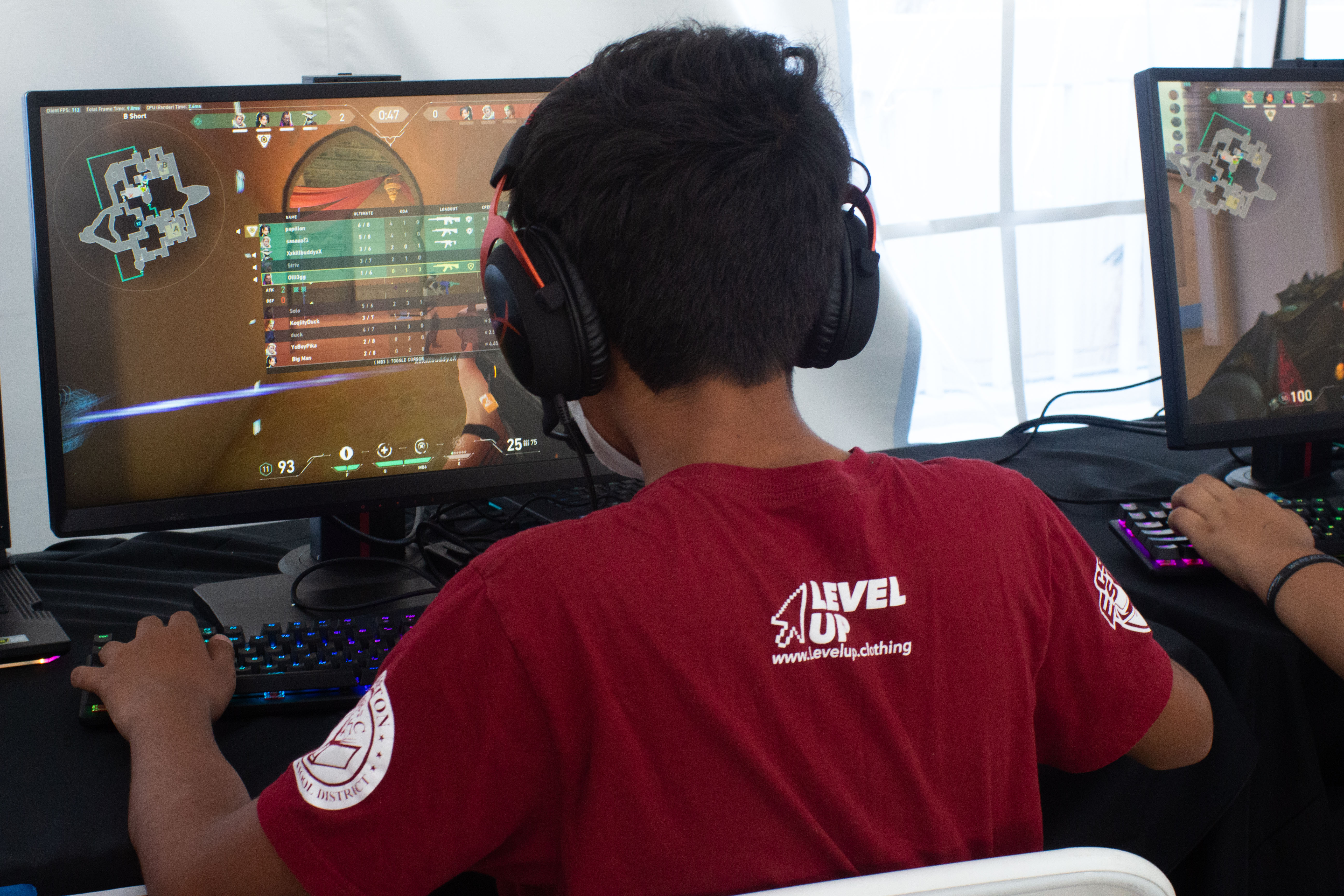Esports: Has Your College Levelled Up?
More than 170 colleges and university are members of the National Association of Collegiate Esports, as online gaming is impacting campuses in a big way.

Parents who said playing video games was a waste of time may have been wrong. Esports, the industry that has sprung up behind competitive gaming, is now a billion-dollar business, and it’s expected to nearly double in size over the next two years.
Gaming has grown exponentially since the arcade days of the 1970s and 1980s, and even since the gaming console wars from the 1990s. The availability of broadband internet has enabled real-time interactions among gamers both locally and around the world. Today, a gamer may be sitting in a dorm room in Ithaca, NY, but their opponents could be anywhere.
[Higher Ed Esports Programs Need Support from AV/IT Experts]
As the esports market has matured, higher education has stepped up to support those who want to pursue careers in the esports industry. The National Association of Collegiate Esports, formed in 2016, counts more than 170 colleges and universities among its membership. These schools offer officially recognized varsity esports programs, complete with coaches and partial or full-ride athletic scholarships.
National Champions
Demand for esports has never been higher at the University of Akron in Ohio, where its esports program has notched 15 national championships in the past four years.
“When we started to build the program out on campus, we thought maybe we would target the varsity population for students to participate at the high-level competitions,” said Nathan Meeker, director of esports at the university. “But that quickly expanded out to the club and recreational scenes on campus, because there was such a demand for it from the student body.”

In response, the University of Akron built three gaming spaces on campus totaling 6,000 square feet that serve 2,500 students each semester, many of whom compete on one of 70-plus club teams. Network connectivity in the spaces with low latency was a high priority because online gaming requires real-time reactions from players, who typically see symmetrical download and upload speeds of 400-500 Mbps delivered by fiber—well above the average U.S. home internet connection of 42 Mbps.
A daily selection of features, industry news, and analysis for AV/IT professionals. Sign up below.
“We also recognized that going through the university’s traditional firewalls may cause an issue with some of the games,” Meeker explained. “The three different spaces were set up with three different tunnels that go from our spaces directly to our exodus on campus, so we’re not dealing with as many issues as a traditional computer lab might deal with.”
[UNC Chapel Hill Opens Esports Arena]
The university’s gaming pods are separated by geography and use. Up to 32 students can play simultaneously in the varsity pod, located in the football stadium, while recreational spaces in the honors college and student union can host another 32 and 54 gamers, respectively, with one screen per gaming station and each station connected to a dedicated Ethernet port.
Growth from Discord
The esports program at the University of South Florida was the result of a student-led initiative that began in 2020 and grew rapidly during the COVID-19 pandemic, when the school’s Discord online gaming group became a hub of activity because students couldn’t meet in person. The business school added an esports class in 2021.

“Since then, we’ve seen tremendous growth in our students, and the community around Tampa is looking to support esports holistically on a larger scale, and that’s what continues to drive it,” said Antonio Gonzalez, assistant director of sports programs at USF. “The student engagement, the community engagement and involvement—esports connects a lot of these different facets for these students.”
Working with the IT department on campus, Gonzalez and his colleagues designed the Esports Living Lab, which is scheduled to be completed by the Fall 2022 semester. “The esports program is predicated on what I like to call the three Cs: community, competition and career competencies,” Gonzalez explained. “When we were looking at designing the space, we wanted to [serve] each one of those pillars of our program within that space. And we think that we have a pretty good mesh of everything we’re able to do within 2,500 square feet.”
In the main area of the lab, students will be able to play at 43 gaming stations, while spectators watch on a total of 23 screens measuring up to 80 inches each. Just off the main room, a production studio will support up to three broadcasters and two analysts, as well as two production leaders who will control the broadcast feed sent to the Twitch streaming app. A separate competition room will have seven stations with cameras to record the players’ faces in addition to on-screen, POV perspectives.
Learning Opportunities
The esports program at California State University, Dominguez Hills grew from a grassroots club of three students in 2017 to more than 200 students by 2019. But keeping up with that level of growth was difficult, and the group quickly outgrew its corner of the student union. Meanwhile, the school administration was taking notes and realized that esports represents much more than a fun social club—it’s a learning opportunity that could serve their students well beyond graduation.

“When we talk about esports we usually hear esports arena,” said Ruben Caputo, who serves as IT consultant and the esports general manager for the campus. “This is a place to design and think, to ideate [and to] work collaboratively. It’s four pieces: incubation space, production space, competition space, and classroom.”
To serve those needs, Caputo and the CSUDH Esports Association began working with Amplified Design on a new gaming center located in the university library complex. Divided into an incubator space with six stations, a competition space with 12 stations, and a classroom for 24 students, the center required 48 ViewSonic screens, a QSC Q-sys control platform, and a CAT6 infrastructure.
According to Mathew Pomeroy, vice president of design services at Amplified Design, the main challenge was working in a space where the video feed had to be as close to live as possible. Relying on Crestron NVX and NDI for video streaming and routing, the team was able to get latency down to just nine milliseconds.

“We have two full 48 port switches that are full on the [Crestron] NVX front that carries into another switch,” Pomeroy said. “Between displays and video feeds and inputs, you’re looking probably over 100 video endpoints, whether they’re inputs or outputs between TV screens, displays or broadcast equipment. We have some quad processors in the mix so you can do some tiling and picture-in-picture.
[Panasonic Helps Southwestern Oklahoma State Configure First-Ever Esports Arena]
“Each of the competitive spaces are totally independent, so gamers can play without any interruption of the video signal,” Pomeroy added. “We take a feed off of the [PC] tower, so that way we can run video signal from the gaming station anywhere we want in the space, whether it goes to Twitch [or] whether it goes to a display at the back of the room.”
For a breakthrough industry and an academic discipline on the cusp of the mainstream, the potential for growth in esports, both professional and institutional, is big.
“We’re trying to make sure we give our space room to expand,” said Gonzalez. “That’s one of the biggest things that I’ve worked on when looking at the space. With the resources that we have right now, we know that we may not get all of the bells and whistles we want. But if we can get room and opportunities for growth in the future, that’s going to help us continue to expand the programs.”
Jim Beaugez is a freelance writer and content creator for the AV, professional audio, and music industries. His work has been published by Systems Contractor News, Pro Sound News, Mix, Radio World, and The Recording Academy, as well as Rolling Stone, Smithsonian, Guitar World, Guitar Player, and other consumer publications. He previously worked in communications for the pro audio and musical instruments industries.
